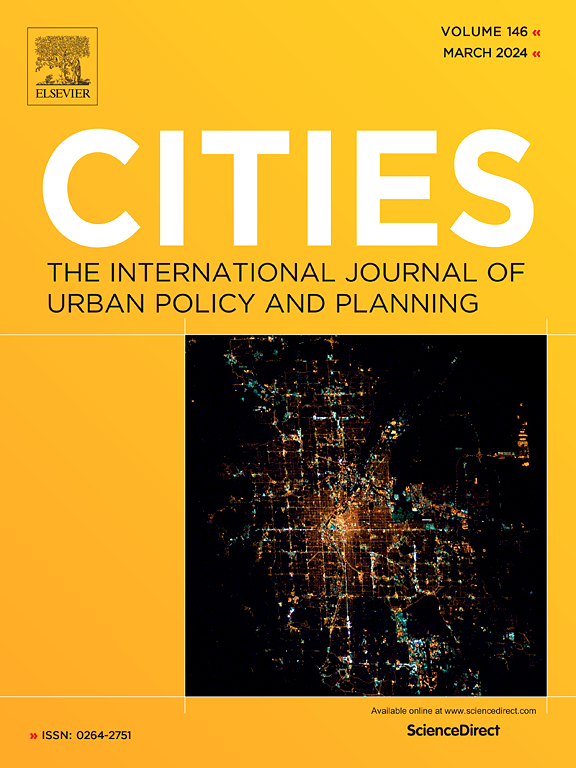Blurring the borders: An analysis of spatial borders and social segregation in gated communities in Egypt
IF 6
1区 经济学
Q1 URBAN STUDIES
引用次数: 0
Abstract
Gated communities are becoming more prevalent in cities worldwide, raising concerns about social segregation, particularly in Egypt. This study utilises social landscape theory to examine how landscape design at the borders of gated communities can affect changes in behaviour and perceptions of space, ultimately enhancing urban cohesion. The study explores the potential of blurring the borders of Egyptian gated communities to create integrative spaces. It does so by analysing the complex relationship between intangible social elements and tangible aspects of the landscape, while also considering social structures and cultural dynamics. Based on a mixed-methods study, which included observation, online questionnaires, and semi-structured interviews, the study shows that blurring borders as zones may contribute to enhanced social cohesion among residents of gated and non-gated communities. The study concludes that to effectively blur the borders of gated communities, landscape design has to achieve a balance between the concepts of openness and connectedness, while also preserving privacy and exclusivity. It proposes dividing territorial bounded spaces into sub-territorial integrative zones, taking into account factors such as privacy, visual openness, permeability, and publicness. The study contributes by shifting the focus of current literature from emphasising the negative effects of gated communities on urban fragmentation to recognising these communities as potential opportunities. It explores how border design and border landscapes can be leveraged to transform the borders of gated communities into socio-spatial integrative zones. The study will subsequently outline practical implications for urban design, landscape architecture, and planning policy.
模糊边界:埃及封闭社区的空间边界和社会隔离分析
封闭社区在世界各地的城市中变得越来越普遍,这引起了人们对社会隔离的担忧,尤其是在埃及。本研究利用社会景观理论来研究封闭社区边界的景观设计如何影响人们的行为和对空间的感知,最终增强城市凝聚力。该研究探索了模糊埃及封闭社区边界的潜力,以创造综合空间。它通过分析无形社会元素和有形景观之间的复杂关系,同时也考虑到社会结构和文化动态。基于一项混合方法研究,包括观察、在线问卷调查和半结构化访谈,该研究表明,模糊边界作为区域可能有助于增强封闭和非封闭社区居民之间的社会凝聚力。该研究的结论是,为了有效地模糊封闭社区的边界,景观设计必须在开放和连通性的概念之间取得平衡,同时也要保持隐私和排他性。在考虑隐私性、视觉开放性、渗透性和公共性等因素的基础上,将领土边界空间划分为亚领土一体化区域。该研究的贡献在于将当前文献的重点从强调封闭社区对城市碎片化的负面影响转移到认识到这些社区是潜在的机会。它探讨了如何利用边界设计和边界景观将封闭社区的边界转变为社会空间整合区。该研究随后将概述对城市设计、景观建筑和规划政策的实际影响。
本文章由计算机程序翻译,如有差异,请以英文原文为准。
求助全文
约1分钟内获得全文
求助全文
来源期刊

Cities
URBAN STUDIES-
CiteScore
11.20
自引率
9.00%
发文量
517
期刊介绍:
Cities offers a comprehensive range of articles on all aspects of urban policy. It provides an international and interdisciplinary platform for the exchange of ideas and information between urban planners and policy makers from national and local government, non-government organizations, academia and consultancy. The primary aims of the journal are to analyse and assess past and present urban development and management as a reflection of effective, ineffective and non-existent planning policies; and the promotion of the implementation of appropriate urban policies in both the developed and the developing world.
 求助内容:
求助内容: 应助结果提醒方式:
应助结果提醒方式:


